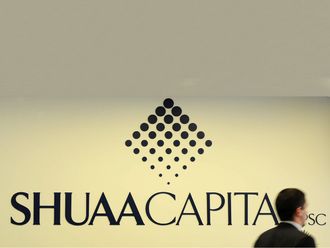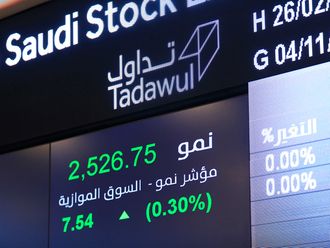Profit-taking, led by insiders, pulled Indian shares lower this week and the trend could continue with the holiday season coming up, but smart investors should grab the opportunity to accumulate shares on the dip as prospects for the new year appear brighter.
With retail inflation dropping to a record low on the back of subdued prices of oil and food, borrowing costs are set to ease in early 2015 setting the stage for a shift in monetary stance to bolster growth. Leading banks have already cut deposit rates and some have begun easing home loan rates.
State Bank of India, the country’s top lender, has slashed deposit rates by 200 basis points over two months for maturity of 7-45 days. While HDFC Bank lowered deposit rates by 50 basis points in select categories, other banks including SBI and ICICI reduced by 25 basis points for longer maturities.
“The deposit rate cut reinforces our view that interest rates are headed lower over the next 3-4 quarters. We think this is the beginning and peak-to-trough cuts could be close to 100 basis points. Lower rates should help the banks on bond books as well as loan growth and non-performing loans,” JP Morgan analyst Seshadri Sen said.
“We remain positive on the sector with Axis, SBI, ICICI and HDFC Bank our top picks.”
After the market closed on Friday, government data showed consumer price inflation at 4.38 per cent in November, the lowest in the new series. And industrial output in October unexpectedly contracted 4.2 per cent from the same month a year earlier, hit by a drop in manufacturing and capital goods output. The data should pile pressure on the central bank to cut policy rates early next year.
Watch industrials
As smokestack industries would be among the beneficiaries when lending rates are brought down, it would be worth the trouble to build positions in sectors such as steel, cement, consumer discretionary, financials and technology.
“We expect industrial stocks to re-rate as interest rates fall in response to government action, fiscal consolidation and declining CPI (consumer price index) which in turn are likely precursors to a new capex cycle in 2016,” Ridham Desai, Sheela Rathi and Utkarsh Khandelwal at Morgan Stanley said in a report, adding 300 basis points to industrials by cutting energy to neutral.
The analysts said an increase in fuel taxes by New Delhi to shore up revenue shortfalls, signalled the government’s focus on fiscal consolidation.
“The government wants to direct the macro benefit of falling oil prices rather than let consumers decide what to do with the oil price windfall,” they wrote. “It wants to keep a buffer to protect the country from a rise in oil prices in the future which again is good for the fiscal deficit and the mix of growth in the coming months.”
In its latest quarterly update, Standard & Poor’s noted this week that India stood out as a bastion of solid expansion thanks to improving confidence that has boosted growth momentum to around seven per cent.
“India has been the region’s brightest spot since our last report. After a modest beginning, Prime Minister (Narendra) Modi’s government has picked up the pace of reform, eliminating the diesel subsidy in early November, liberalising foreign investment into the insurance sector, and curbing discretionary government spending for the second half of the current fiscal year,” the global rating agency said.
Outlook upbeat
The founding families of software bellwether Infosys Ltd — including Narayana Murthy, Nandan Nilekani and S D Shibulal, all former CEOs — sold shares worth more than $1 billion, to raise cash for their philanthropic activities. Although they continue to remain the largest individual shareholders in the company, the sale spooked market sentiment and triggered profit-taking.
The top-30 Sensex shed 3.9 per cent in its biggest weekly fall in three years to 27,350.68, with foreign funds selling stocks worth more than $150 million. The 50-share Nifty dropped 3.7 per cent to 8,224.10.
Still, the indices are up 29.2 per cent and 30.5 per cent respectively in the year-to-date, making them among the biggest gainers among major world stock markets in 2014 and analysts expect more gains in the coming year.
“Despite this steep rally, the valuation premium for India versus equities globally has not expanded as much,” said Neelkanth Mishra, managing director and India equity strategist at Credit Suisse. “It is still only about 15 per cent off 10-year lows, and significantly below the highs seen in early 2008. In many ways, the strength in Indian equities is backed by the rising preference for equities globally.”
Economists at the investment bank expect India to post the fastest nominal GDP growth in 2015 in dollar terms, with the growth gap between India and the rest of the world expanding.
“We believe the market is likely to continue to pay more for growth. It’s likely to see the strongest earnings growth, with among the least severe downward revisions,” the bank said and listed its top picks as Gujarat Pipavav, Havell’s, HCL Technologies, HDFC Bank, Kajaria, Maruti Suzuki, Shriram Transport Finance and Sun Pharma.
Citigroup analysts Aditya Narain and Jitender Tokas expect the Sensex to reach 33,000 and the Nifty to hit 9,850 by December 2015.
“India’s recently renewed momentum reflects falling rate expectations,” they wrote in a report. “Policy rates should fall 75 basis points in 2015 — with downside risks to inflation, and there could well be more.”
“With the best market gains usually leading into/at early stages of rate cuts, upsides on the level and slope of the yield curve, the rate engine will fire now, and in early 2015.”
The writer is a journalist based in India.











